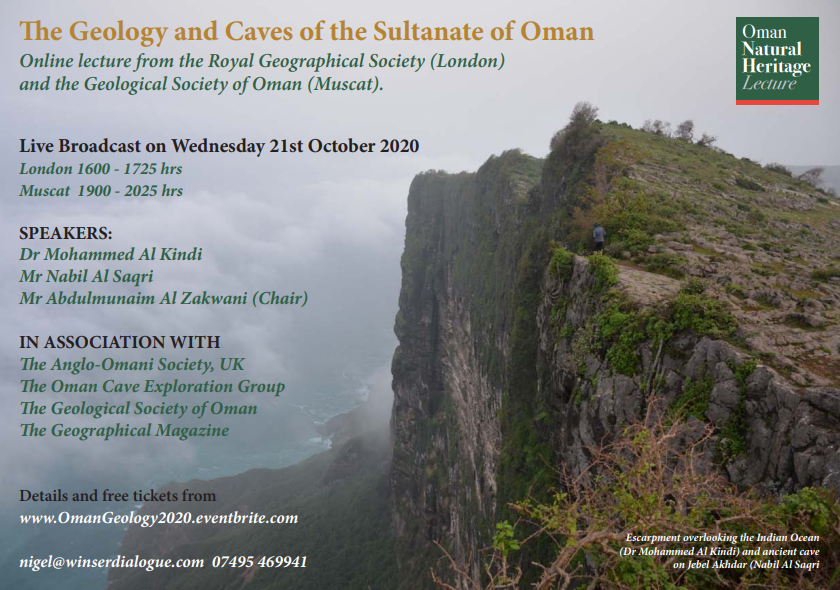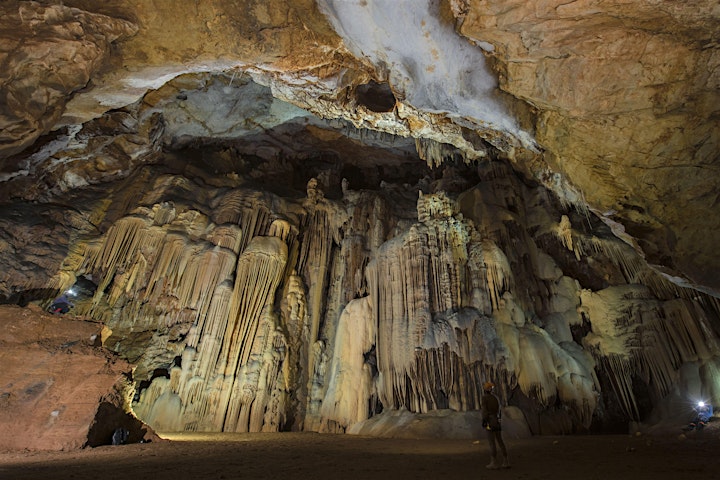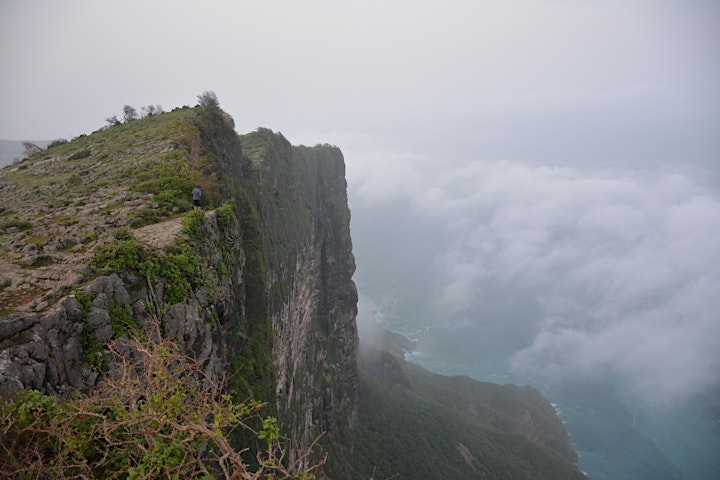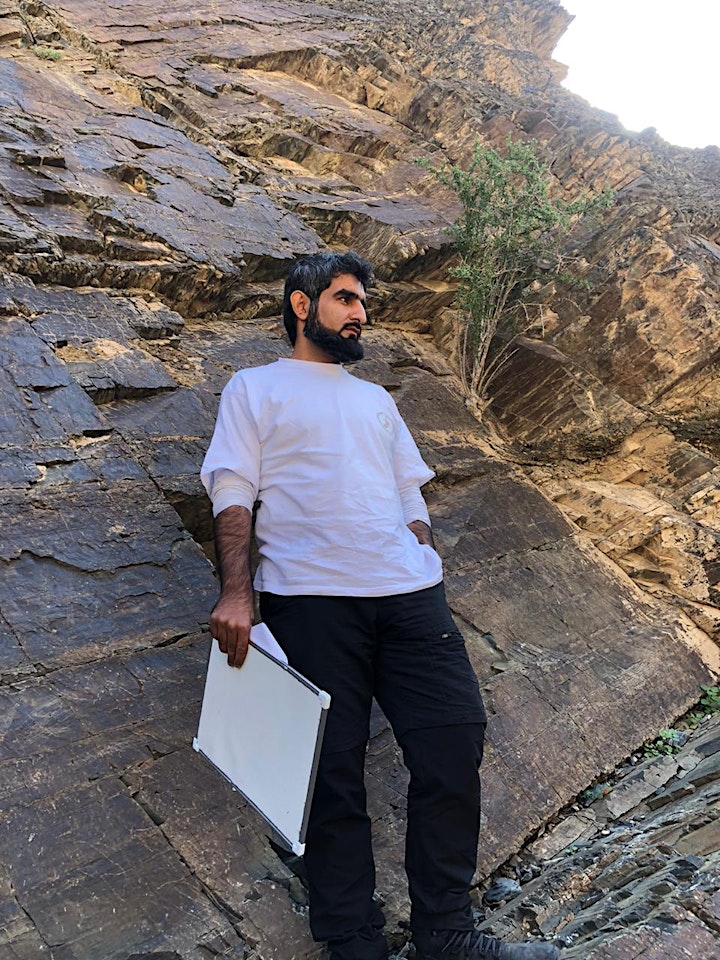This Oman Natural Heritage Lecture 2020 , the 5th in the series if annual lectures, this year is being broadcast live online on Wednesday 21st October at 4.00pm from the Royal Geographical Society, London and 7.00pm from Muscat. This year we focus on Oman's unique geology and new cave systems. Two distinguished Omani speakers will be giving this lecture thsi year - Dr Mohammed Al Kindi and Mr Nabil Al Saqri. More details below. Please register now by clicking here and details of how to join this free event on YouTube will be sent to you. Thank you on behalf of the Oman Natural Heritage Lecture Group UK, Nigel Winser.

The Story - the Wonders of the Geology of Oman.
The Sultanate of Oman is a paradise for geologists. Many text-book examples of rocks, fossils, structures, caves, meteorites and land terrains are found in Oman. Through much of the past 800 million years, Oman has lain, as today, on the edge of a Continent and Ocean. Currents within these oceans carried life from one region to another. As continents rifted or collided and oceans opened or closed, new arrangements came into place. Oman's geology is unique and of interest to all earth scientists of all ages around the world.
These details are obvious today from the well exposed rocks in the mountain chains in North and South Oman. Oman hosts the best exposed and largest Ophiolites, a slab of an old oceanic plate, in the world, which can be easily observed within a short drive from the capital, Muscat.
Geologists are also interested in the desert landscape. Thousands of meteorites can be found on Oman's desert plains, including rare Martian and Lunar meteorites that provide a lot of information about the solar system.
Cavers also love Oman, as new discovered are being made today. The cave systems in Oman are among the largest, deepest and most beautiful caves found in the world. In Oman, evidence of the oldest fossils of plants and animals around the globe are found. The country often acted as a stepping-stone between the various continents for land fossils during different geological times, such as dinosaurs and elephants that once roamed the planes of the country. Early man passed through, even settled, as evident from the huge number of artefacts that he left behind. Civilizations flourished in this land once called Majan and Mazoon. Welcoming and vibrant, amongst the splendour, Omanis live today.

Folder chert units by Dr Mohammed Al Kindi, Oman Geological Society.

Leaf fossil from the Permian period by Dr Mohammed Al Kindi, Oman Geological Society.
The Diversity of the Caves of Oman
The Sultanate of Oman is considered one of the most attractive destinations for cavers across the globe. It includes a wide spectrum of caves that form in different types of rocks in the mountain chains of north and south Oman. They contain huge cave chambers, very deep pitches, spectacularly decorated rooms, large sinkholes, narrow tunnels, and complex passage systems. Many of these are home for unique cave fauna, and some have been used by humans, since the Palaeolithic, for various purposes. Despite decades of cave exploration in Oman, conducted by numerous caving teams, many caves in Oman are still under explored or not properly surveyed or reported. The Oman Cave Exploration Team has conducted a project to document these caves and describe them to the scientific community and keen adventurers. The team will present a summary of their work during the Oman Natural Heritage Lecture, in Oct 2020.

The Hayl Al Diyer Cave
One of the many caves of Oman being explored and surveyed by the Oman Cave Exploration Team, including our two distinguished speakers, Dr Mohammed Al Kindi and Mr Nabil Al Saqri.


The Wonders of Oman's Geology and Caves. Join us on the 21st October to learn more about the unique geology and new caves systems being studied and explored by distinguished field scientists in Oman, led by Dr Mohammed Al Kindi. Here we see the massive escarpment overlooking the Indian Ocean in Southern Oman. These photos taken by Mohammed show an 'extensional fault or normal fault' in geological terms, produced in relation to the opening of the Gulf of Aden spreading ridge.

Dr Mohammed Al Kindi (Speaker) Geological Society of Oman
Dr Mohammed al Kindi is a keen and active Omani geologist. He obtained his bachelor’s degree in physics and geology from the University of Aberdeen, Scotland in 2003. He completed his PhD with the University of Leeds, England in 2006, studying the structural styles at the southern limit of the Oman Mountains. In 2008, he became the executive manager of the Geological Society of Oman (GSO) and in 2013 he became President of the Society. Between 2006 and 2014, Mohammed worked as a petroleum development geologist in Petroleum Development Oman (PDO).
Mohammed al Kindi is a geological surveyor, enthusiastic fossil-hunter, cave explorer and keen photographer. His main specialism is structural archaeological expeditions. He has had the opportunity to visit many geological wonders and fossil-rich areas in Oman while working in PDO and during his contributions to GSO’s projects. He has led several geological expeditions and research groups in Oman.
Mohammed currently (2020) is the CEO and founder of the ‘Earth Sciences Consultancy Centre’ as well as a visiting lecturer in a number of Universities and Institutes, including the German University of Technology in Oman, where he supervises several students to study various aspects related to different branches of geology. Mohammed has published two books about the evolution of land and life in Oman and about the caves of Oman.

Mr Nabil Al Saqri (Speaker)
Nabil is a schoolteacher of information technology from al Jebel al Akhdar in Nizwa. Having lived in one of the most diverse natural attractions in Oman, Nabil, over time, became deeply passionate about the documentation and protection of wildlife and natural wonders in Oman. He specialises in the macrophotography of fauna and flora, particularly of insects. He is a member of the Oman Cave Exploration Team (the Speleological Team of Oman) and is an active member contributing to the current exploration of Oman’s caves. As part of the team’s activities, Nabil has travelled across Oman taking enchanting photographs of caves and their fauna. He was one of the key members in rigging caves and surveying their trajectories. He also worked with the team to produce a book about their journey documenting caves in Oman. The book included about 100 caves from Oman with information about their locations, size, geological setting, and main attractions.
The 800 Million Year Story of Land and Life Evolution in Oman by Dr Mohammed Al Kindi.
Dr Mohammed al Kindi presenting Nigel Winser with copies of his new book ‘A 800 Million Year Story of Land and Life Evolution in Oman’ for the Ambassador of the Sultanate of Oman, the Anglo Omani Society and the Royal Geographical Society.
This book takes readers on a fascinating journey to discover the story of land and ancient life evolution in Oman since at least 800 million years ago. Oman is well known for its marvellous geology. What tectonics affected this part of the world and what organisms lived there? How did the climate and life develop? Did life forms become more complex and varied or become extinct and disappear forever? The book thoroughly reconstructs this land and ancient life evolution and offers readers an understanding on how land, climate and life have proceeded and developed in Oman through millions of years.
For those who would like to buy a copy of this magnificent book, please do contact Dr Mohammed Al Kindi direct to get a price including postage. malkindi@gmail.com